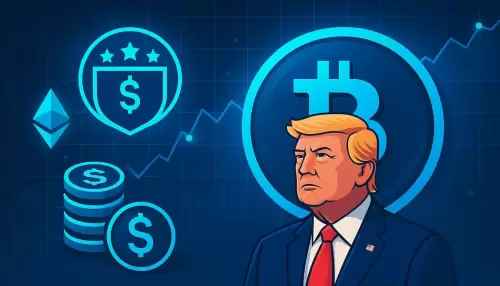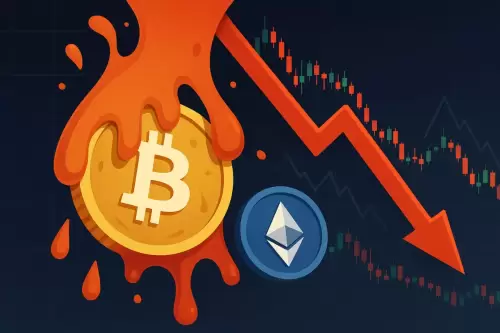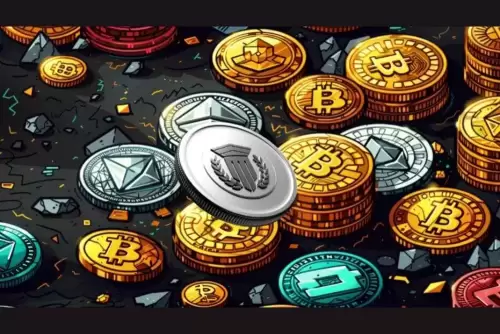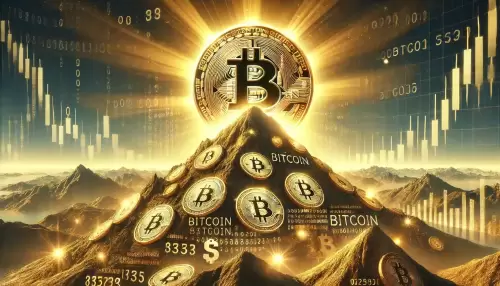 |
|
 |
|
 |
|
 |
|
 |
|
 |
|
 |
|
 |
|
 |
|
 |
|
 |
|
 |
|
 |
|
 |
|
 |
|
Cryptocurrency News Articles
Non-Fungible Token (NFT) Fractionalization Platforms Market Report 2025
Jun 12, 2025 at 06:54 pm
This report provides an in-depth analysis of the growth drivers, technology innovations, and global opportunities in the NFT fractionalization market.

Non-Fungible Token (NFT) fractionalization platforms are digital infrastructures that facilitate the division of ownership of unique digital assets—such as art, collectibles, and virtual real estate—into smaller, tradable fractions. This innovation allows multiple investors to co-own high-value NFTs, democratizing access to previously illiquid and expensive digital assets. As of 2025, the NFT fractionalization market is experiencing robust growth, driven by increasing mainstream adoption of NFTs, the maturation of decentralized finance (DeFi) protocols, and a growing appetite for alternative investment vehicles.
The global NFT market surpassed $40 billion in sales in 2023, with a significant portion of this activity shifting toward platforms that facilitate fractional ownership Statista. Leading platforms such as NFTfi, Fractional (now rebranded as Tessera), and Unic.ly have pioneered the space, offering secure smart contract frameworks for splitting NFTs into fungible ERC-20 tokens. These tokens can be traded on secondary markets, providing liquidity and price discovery for assets that were previously difficult to value or sell in parts.
Key market drivers in 2025 include the proliferation of high-value NFT collections, increased regulatory clarity in major jurisdictions, and the integration of fractionalized NFTs into broader DeFi ecosystems. Institutional investors are showing heightened interest, as fractionalization lowers entry barriers and enables portfolio diversification. According to DappRadar, the number of active users on NFT fractionalization platforms grew by over 60% year-over-year in 2024, signaling strong user adoption and engagement.
However, the market faces challenges such as legal uncertainties regarding collective ownership, intellectual property rights, and the potential for market manipulation. Regulatory bodies in the U.S., EU, and Asia are actively evaluating frameworks to address these concerns, which could shape the competitive landscape and growth trajectory in the coming years Brookings Institution.
In summary, NFT fractionalization platforms are transforming digital asset ownership by enhancing liquidity, accessibility, and investment flexibility. As the market matures in 2025, continued innovation, regulatory developments, and institutional participation are expected to drive further expansion and mainstream acceptance.Non-Fungible Token (NFT) fractionalization platforms are rapidly evolving, driven by technological innovations that enhance accessibility, liquidity, and security in the digital asset market. As of 2025, several key technology trends are shaping the landscape of NFT fractionalization, enabling broader participation and new use cases for both creators and investors.
One notable trend is the increasing adoption of Layer 2 scaling solutions to mitigate the scalability constraints of Layer 1 blockchains. Platforms are migrating to Optimism, Arbitrum, or StarkNet to facilitate faster and more cost-effective transactions, facilitating a smoother user experience particularly during periods of high network congestion. This move is crucial for expanding the participation of less technically adept users and institutions that may be deterred by slow throughput or high gas fees.
Another significant development is the integration of fractionalized NFTs with decentralized finance (DeFi) protocols. Platforms are offering liquidity mining or yield-farming programs to incentivize users to provide liquidity to trading pairs involving NFT fractions. This integration aims to boost secondary market activity and liquidity for fractionalized assets, which is essential for their efficient trading and price discovery. Moreover, platforms are developing novel DeFi primitives specifically tailored for fractionalized NFTs, such as fractionalized stablecoin vaults or NFT index funds, to generate yield and diversify investment strategies.
Furthermore, there is a growing focus on interoperability and cross-chain compatibility. Platforms are developing protocols that enable the fractionalization of NFTs minted on different chains and the seamless transfer of fractions across ecosystems. This move expands the scope of fractionalized assets to include NFTs from diverse marketplaces, gaming platforms, and metaverse projects, catering to the diverse interests of a wider user base. It also aims to optimize the liquidity and trading opportunities for each asset class.
Finally, platforms are investing in user interface (UI)/user experience (UX) improvements to create more intuitive and user-friendly interfaces. This includes streamlining the process of selecting NFTs for fractionalization, displaying fractional token balances and transactions clearly, and providing comprehensive educational materials to demystify the concepts and mechanics of fractional ownership. By focusing on optimal UI/UX, platforms aim to attract a broader audience, including less technically inclined individuals and institutional investors who may prefer a seamless and user-friendly experience.
These technology trends are collectively driving the maturation of NFT fractionalization platforms, positioning them as pivotal infrastructure in the broader digital asset economy for 2025 and beyond.The competitive landscape for Non-Fungible Token (NFT) fractionalization platforms in 2025 is characterized by rapid innovation, increasing institutional interest, and a growing number of specialized service providers. NFT fractionalization platforms enable the division of high-value NFTs into smaller, tradiable fractions, thereby democratizing access to digital assets and enhancing liquidity in the NFT market. This segment has attracted both established blockchain companies and new entrants, each vying for market share through technological differentiation, regulatory compliance, and strategic partnerships
Disclaimer:info@kdj.com
The information provided is not trading advice. kdj.com does not assume any responsibility for any investments made based on the information provided in this article. Cryptocurrencies are highly volatile and it is highly recommended that you invest with caution after thorough research!
If you believe that the content used on this website infringes your copyright, please contact us immediately (info@kdj.com) and we will delete it promptly.






























































